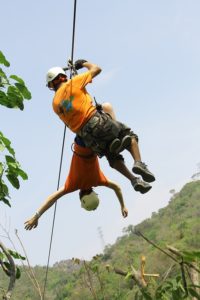Theme parks and carnivals offer thrills year-round at a variety of amusement parks all over the country. No one ever expects things to go wrong during a family outing meant to be a memorable, fun afternoon. However, accidents can and do happen.
The evening news offers constant stories of injuries or even fatalities from these situations.
 Minimal wounds such as cuts and bruises may at times be overlooked, but more damaging consequences, such as broken bones or neck whiplash, can be debilitating and may have long-term and far-reaching impact on an individual’s life.
Minimal wounds such as cuts and bruises may at times be overlooked, but more damaging consequences, such as broken bones or neck whiplash, can be debilitating and may have long-term and far-reaching impact on an individual’s life.
This may especially be so if the individual is a child, and injuries to children and teenagers are, sadly, all too common in amusement parks and water parks alike.
What causes these forms of injuries?
Reviews of accident reports over a decade-long study have shown a few consistent factors, such as a mechanical failure of a ride, the improper operation of a ride by the attendant, a ride participant not following the instructions (such as ignoring height or weight restrictions or not wearing a safety harness), and the simple action of the ride itself (as within a spinning ride causing dizziness or vertigo for some passengers).
 Furthermore, while many rides are often inspected for security and obvious defects, rides at what are known as “fixed sites” (established theme parks) are not always covered by regulatory inspections, whereas “temporary site rides” (those found at traveling carnivals and midways) are generally given more scrutiny.
Furthermore, while many rides are often inspected for security and obvious defects, rides at what are known as “fixed sites” (established theme parks) are not always covered by regulatory inspections, whereas “temporary site rides” (those found at traveling carnivals and midways) are generally given more scrutiny.
These items can individually or collectively lead to an accident or injury to amusement park riders.
What can be done if someone is injured on an amusement park ride?
While many people may feel that they have no options if they are injured in this manner, there can be some legal actions that may be pursued. Generally speaking, a case may be made for negligence or for product liability.
Like most places of employment, a park is responsible for the actions of its operatives, and if the employee did not follow proper protocol for ride operation, then a claim may be able to be made for this scenario.
Similarly, if the product is found to have a mechanical issue or if signs are not readily visible warning passengers of possible problems, then these items may be used to follow up for legal remediation.
It is best to consult with an experienced personal injury attorney with specifics to allow for proper evidence review and to determine the best course of action for moving forward.

